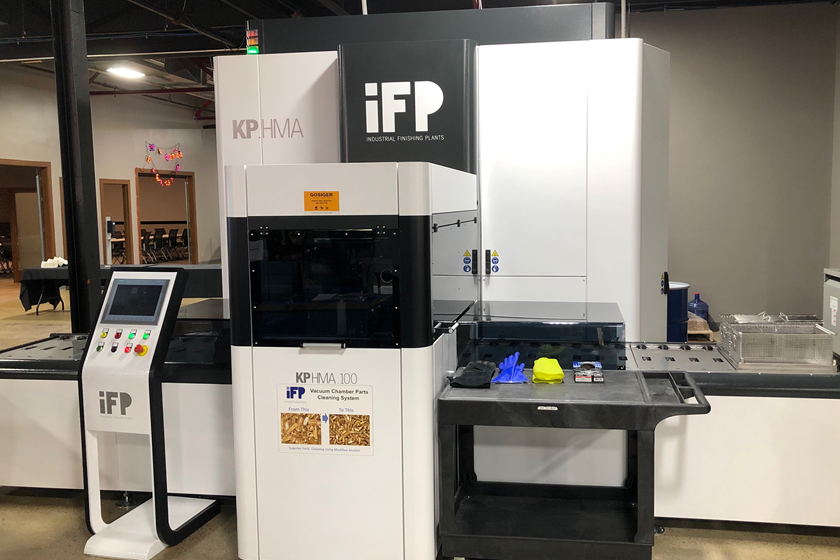Repair/Rework on Powder
Is there an industry standard with regard to recoating that we can adopt?
Q. We subscribe to your publication and find it very informative each month. Your clinic section is especially useful for learning of other people’s problems and your solutions. My apologies if you have answered this question before. It is something that is causing us considerable pain at the moment.
We have a five-stage iron phosphate pretreatment and apply polyester powder to our range of steel products that are used outdoors. Although we try to avoid it, from time to time we need to perform rework on the coated products. This can be the result of a scratch, water damage, thin film or similar defect in the finish.
Featured Content
Our rework procedure is not well-defined, but we abrade the surface with a DA sander and blow the particles off or rinse with a power washer and then re-hang and recoat. Alternatively, to address thin film thickness, we’ll try and recoat over the top after wiping off any finger prints/shop soils with some kind of cleaner (such as Simple Green).
The results are inconsistent, and we have a lot of failure. We see some type of reaction in the finish after cure, where the film looks to have migrated away from certain areas or contaminants on the surface. Other times the finish seems heavily undulated like a severe case of orange-peel affect. Either way, the finish does not meet our specification, and we end up either burning off the coating (in our burn-off oven) or remaking the part.
Is there an industry standard with regard to recoating that we can adopt? I.S.
A. The rework defects you describe are common. If the powder will not flow out and cover an area, it is because that area has a contaminant. You have to be sure that the surface is clean (including removal of any residual chemistry). The excess texture you describe may be due to insufficient coverage or high levels of current draw (micro-amps). The surface must be recoated 100 percent to avoid dry-spray appearance. The current draw needs to be controlled to avoid back ionization and excess orange peel.
There are some industry norms for this kind of thing, but no one standard. Sanding is a good first step to smooth out a blemish caused by particulate. You can then wipe off the dust or blow it off with clean, dry compressed air. Handling should be done with clean gloves on. Washing with Simple Green or other cleaners is not recommended unless you have a reliable way of rinsing the surface. A cleaner or solvent can leave contamination on the surface that will cause a smearing of soils, wrinkling or shrinkage of the powder. If you must use something to take off fingerprints, use a mild acidic, alkaline or neutral cleaner, and then rinse it thoroughly.
Use a factory-pre-set gun circuit for recoats or be sure to control the micro-amps to under 20 to avoid back-ionization and orange peel.
RELATED CONTENT
-
Anodizing Vs. Powder Coat
I am an engineer on a large yacht build project and urgently need information and advice on choosing a finish for the aluminum deck plates in the engine room.
-
Understanding Infrared Curing
Infrared cure is gaining increased attention from coaters as a result of shorter cure cycles and the possibility of smaller floor space requirements when compared to convection oven curing.
-
Calculating the Cost of Powder Coating
How can you calculate the cost of powder coating a component if you only know its surface area? Powder coating expert Rodger Talbert has the answer.



















